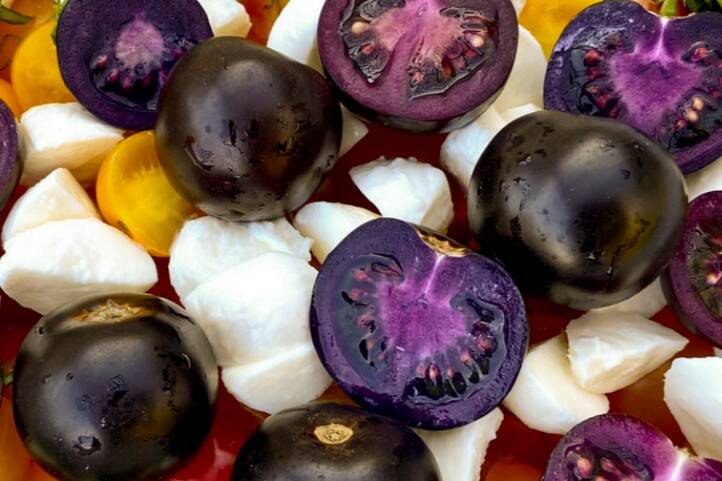The folks at HelloFresh, a meal-kit company, probably didn’t intend to wade into the latest dairy debate in Canada when they released their global Christmas Cookie Price Index Study this week.
The company compared the cost of ingredients — flour, eggs, butter, sugar and baking powder to bake a standard batch of Christmas cookies in major U.S. cities and 31 countries around the globe.
Nevertheless, the results, expressed in U.S. dollars, add some badly needed context to the ongoing debate over the cost of dairy in Canada relative to other parts of the world.
Read Also

Introducing the purple tomato
Health Canada has approved bioengineered The Purple Tomato (TM), maybe leading to new culinary uses and health benefits?
News that the Canadian Dairy Commission wants an 8.4 per cent increase in wholesale milk prices for the coming year has been making headlines. It’s a steep hike by any definition, and well above typical increases of one to two per cent.
However, these are unusual times. Inflation not seen since the 1980s is touching every aspect of Canadians’ lives, from housing, to energy to food. Of course it’s concerning, especially for those running their households on tight budgets.
So should we be shocked and dismayed that those same inflationary pressures affect dairy farmers? Apparently.
Supply management critics have been out in full force railing against what they see as unjustifiably large increases, a lack of transparency and failure to consult with consumers in the price-setting process.
The dairy farmers are running defence with opinion pieces explaining that their costs for feed, fuel, seed and equipment have risen by double digits due to this year’s drought and the same cost increases affecting everyone else.
Innocently entering the fray is the HelloFresh Christmas Cookie Price Index comparing the cost of ingredients to make 100 classic butter cookies, country by country.
The ingredient prices were collected from online supermarkets based on two pounds of flour, a dozen eggs, eight ounces of butter, a one-pound package of baking soda and two pounds of sugar.
At $6.75, Canada is the 12th most expensive place in the world to bake that batch of cookies.
Sweden is the most expensive at $12.83, followed by the Dominican Republic ($11.74), Denmark ($10.97), New Zealand ($10.57), Russia ($9.81) and Switzerland ($9.75).
Ecuador is the least expensive place to bake at $3.50 per batch, followed by Poland ($3.62), Spain ($3.80), Germany ($4.04) and Chile ($4.20).
Looking specifically at butter, it’s notable that the Canadian price at $3.94 is lower than in the U.S. at $4.17, Australia at $6.64 and New Zealand’s $8.83. These three countries, all major dairy exporters, are often held up as examples of how consumers would “benefit” if we ditched the Canadian system.
Also interesting were the flour prices, which are unregulated. Canada, one of the largest wheat exporters in the world, is tied with Denmark for having the highest flour price at $1.61. The U.S came in second at $1.01. No one is taking aim at the wheat farmers, nor should they.
Farmers generally are seeing record-high prices for what they have to sell. But many have less to sell because of the drought, and the cost of ingredients they need for next year’s crop are sky high too.
Canadian eggs, another supply-managed commodity, were at 65 cents and near the top end of the cost scale, as were U.S. eggs at 40 cents. The most expensive eggs are in Denmark ($1.48). The least expensive eggs can be found in Ecuador (38 cents).
Canada’s supply-managed dairy, poultry and egg farmers are part of a politically enabled system that acknowledges their costs of production in exchange for regulating how much they produce. It is designed to pay farmers a fair price and ensure Canadians get a stable supply of important food products.
No system is faultless. There’s always a risk that paying farmers cost-plus will incentivize inefficiency. On the other hand, farmers making a decent living can afford to invest more in protecting the environment and in animal welfare.
This is not to say that the future of dairy policy in Canada should hang on an index developed by a company selling pre-portioned food in a box.
However, it does suggest that if Canadians choose to abandon supply management, the decision shouldn’t be based on the premise of cheaper dairy.
















